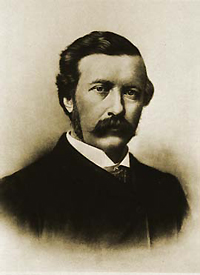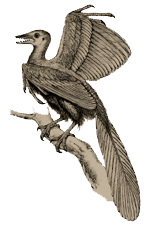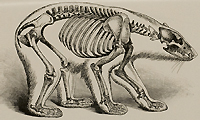Darwin’s Champions
Darwin’s Campaigners continued

George John Romanes (1848-1894), circa 1894
Canadian-born physiologist George Romanes (1848-1894) extended evolutionary theory to the development of human intelligence, while tirelessly writing and speaking to public audiences. Like many of Darwin’s defenders, Romanes was no blind follower. He felt free to note some of the problematic aspects of evolutionary theory—how did species split off from one another, rather than continually adapt to their surroundings, for example? Yet, even while questioning some aspects of Darwin’s theory, Romanes worked within the Darwinian tradition of careful observation and reasoning. Starting from his work in the physiology of the nervous system, he extended his investigation into mental function in such works as Mental Evolution in Animals (1883) and Mental Evolution in Man (1888). Romanes produced Darwinism Illustrated (1892), a series of wood-engravings “explanatory of the theory,” richly persuasive. And in 1892 he founded the Romanes Lectures at Oxford University; Thomas Henry Huxley gave the second Romanes Lecture, in 1893, on “Evolution and Ethics,” right in line with the founder’s idea that mental function had evolved along with anatomical structure.

Archeopteryx, in George John Romanes, Darwinism illustrated, 1892
Darwin’s champions set the tone of Western intellectual life from the 1860s through the early decades of the 20th century. With them, and many others of their day, evolution by natural selection led to the new world view of naturalism—a self-generating, self-evolving world of shifting boundaries and endless possibilities.

Skeleton of polar bear, in George John Romanes, Darwinism illustrated, 1892
Last Reviewed: May 8, 2014


